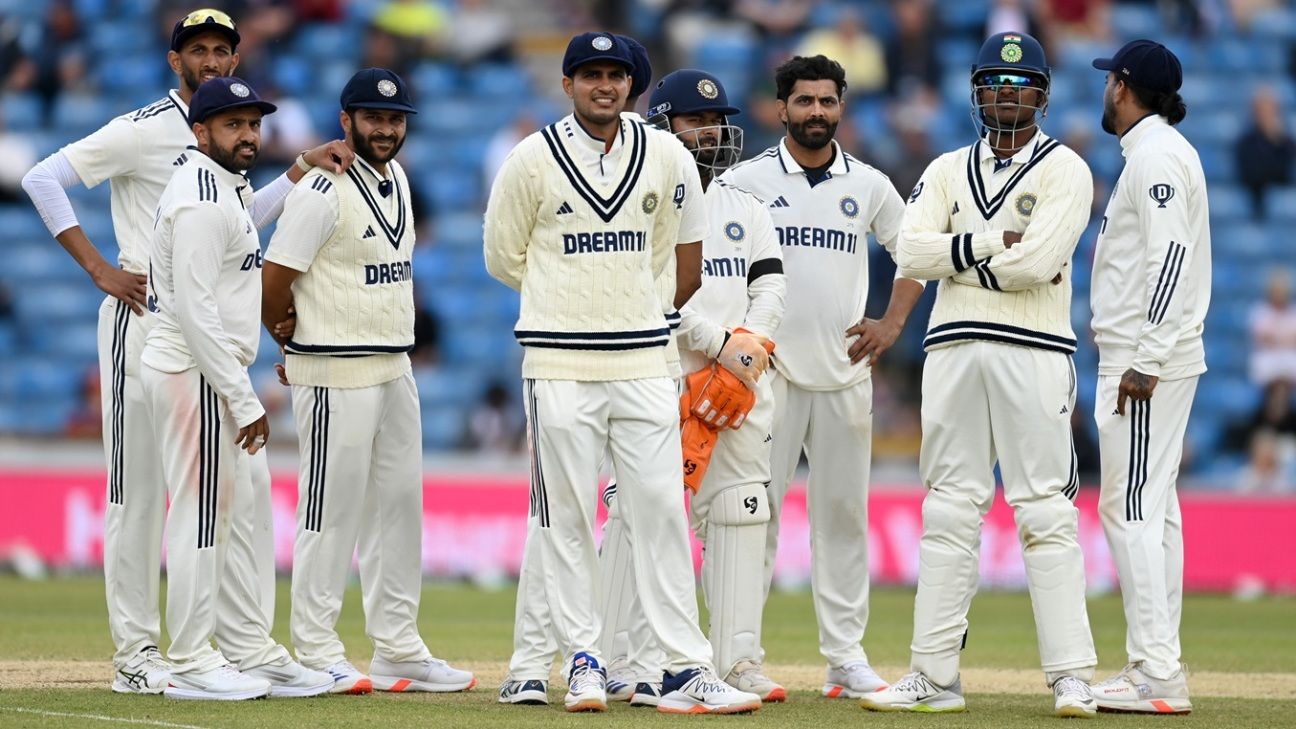 |
|
The Headingley Test match was a perplexing affair, characterized by India's dominance in several phases of the game, yet ultimately ending in a defeat. While the Indian bowlers faced criticism, statistical analysis reveals they generated more opportunities for wickets than their English counterparts. This suggests that factors beyond sheer bowling performance contributed to the outcome. The high number of wickets lost by India relative to the number of false shots played in both innings underscores this point. India's first innings saw ten wickets fall to just 108 false shots, while the second innings witnessed ten wickets for 92 false shots. In contrast, England lost ten wickets for 137 false shots in their first innings and five wickets for 113 false shots. This disparity highlights the significance of converting opportunities into dismissals. While luck can play a role in cricket, attributing India's loss solely to misfortune would be an oversimplification. The context of Adelaide's '36 all out', where false shots frequently found fielders' hands, serves as a reminder of how luck can influence outcomes. However, at Headingley, the issue appeared to be more nuanced than mere bad luck.
The prevailing 'Bazball' philosophy, emphasizing aggressive shot-making against good deliveries and leveraging flat pitches, didn't fully define England's approach at Headingley. Typically, Bazball relies on the combination of attacking batting prowess and favorable pitch conditions, conducive to high scores. However, the Headingley pitch maintained its batting-friendly nature throughout the match. Interestingly, other teams tend to adopt a more conventional approach, minimizing risky shots against quality deliveries. The contrasting styles of England's taller bowlers, who are known to target good lengths and extract more from the pitch, also play a crucial role. During the Bazball era, England's batting average and strike rate on false shots have usually surpassed those of their opponents. Yet, Headingley defied this trend. India achieved a higher average and scored at a faster rate on false shots in the first innings, indicating that the conditions were more conducive to their aggressive approach. This difference could have been even more pronounced had India capitalized on their catching opportunities.
The analysis isn't intended to solely criticize dropped catches, but rather to emphasize that India held a significant advantage at various points in the game. They disrupted England's accustomed strategy, largely because the Indian attack lacked the necessary pace and experience to consistently trouble the English batsmen. England's bowlers, as Stuart Broad aptly noted, struggled to maintain consistent length and exploit disconcerting areas. In the first innings, England's fast bowlers delivered only 197 balls in the 6-8m band across 86 overs, whereas India bowled 203 balls in the same range within 77.4 overs. This demonstrates India's greater commitment to bowling in the crucial good-length area. While India managed to extract slightly more average seam movement from good length compared to England, the movement, around 0.6 degrees, wasn't consistently troubling for the batsmen. The England seamers, despite this, had better average and strike rate from good-length balls, but the statistics were influenced heavily by dropped catches, so the pitch itself didn't particularly favor England in this area. Such a high rate of dropped catches is unlikely to be replicated in subsequent matches.
One area where England demonstrably outperformed India was in extracting more from the aggressive 5-6m length. They generated more swing with the fuller ball, even though the seam movement remained minimal for both sides. This suggests that England's bowlers were more adept at utilizing the conditions to their advantage, particularly when targeting a fuller length. The analysis highlights the complexity of cricket matches and the multitude of factors that contribute to the final result. While India displayed dominance in certain aspects of the game, their inability to convert opportunities into wickets, coupled with England's effective utilization of the fuller length, ultimately led to their defeat. The Headingley Test underscores the importance of capitalizing on chances and adapting strategies to the specific conditions of the pitch and the strengths and weaknesses of both teams. India's aggressive approach, while initially successful, ultimately faltered due to a combination of factors, including dropped catches and a lack of consistent pressure from their bowlers.
Source: Not all doom and gloom: India almost had England at Headingley
